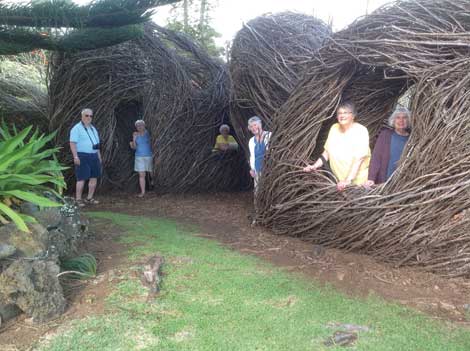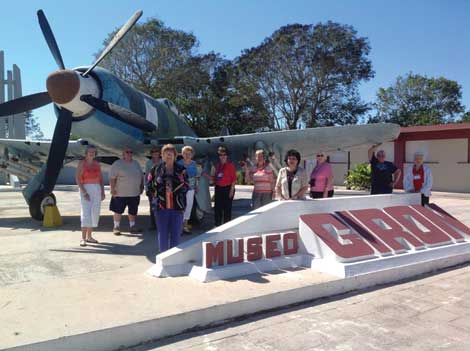Wowee, it’s Maui
Rain and sun, rain and sun. That’s how our trip to Maui turned out.
As with the Seattle area, Hawaii was breaking records in the rain department. We were so lucky where we were in the up country of Maui. We had rain every evening and it just nicely cooled things down. During the day we could drive a mile or so and find beautiful, sunny weather.
And drive we did. We put over 800 miles on the vans during our stay. Once again, we spent two weeks learning all about the island we were on. Maui is more like two islands joined by a deep valley. It is 48 miles long and 26 miles wide (only six miles at the narrowest point of the valley). The population is 155,000 residents, plus an average of 42,000 tourists. Over 2 million tourists come to this island every year. Our log cabin home was in what is called Up Country just out of Makawao, a cowboy town, on the way up to Haleakala Crater. We were next to the Sacred Garden in the middle of jungle vegetation with a beautiful river running through the property. Almost every day we would take off for some part of the island to explore.
Our first adventure was to Iao Valley and the Iao Needle, a 2,250-foot rock formation surrounded by lush, green mountains. There are beautiful views from the top of the lookout back through the valley and into the town of Wailuku. Of course, we also had to have a stop at Costco to stock up on provisions for our stay.
On another day, we headed out to Kihei, Wailea and Makena Beach. We had lunch at the beautiful Grand Wailea Resort with all its pools, sculptures, waterfalls and beaches. You can drive for hours just looking out the windows.
A full day was spent on the Road to Hana, Fifty-six one lane bridges and 617 curves each direction. Around each curve you would find flowers, a waterfall, or just more jungle vegetation. It was an amazing day. We stopped at beaches to watch the surf crashing over lava rock, picked up banana bread at a roadside stand, and had lunch at Hana Ranch.
Lahaina is an old whaling port, now loaded with shops and restaurants. We did our thing and then all met up again under the giant banyan tree (planted in 1873). It takes up the entire city park with all its extended trunks and branches dripping with vines. We had such a great time that we even came back another day to explore the Kaanapali coast and have dinner at the Hula Grill.
One day we drove to Maalaea, where we boarded a catamaran and took off looking for whales. We were very lucky this late in the season to see a couple of them. We saw puffs of water where mothers were swimming with babies and even had a chance to catch a couple of tails splashing about.
Haleakala at sunrise is a spectacle not to be missed. It was a very early start for the two-hour drive up to 10,000 feet on very windy, curvy roads, and it was very cold at the top. We wrapped ourselves in blankets and watched over the crater as the sun rose above the clouds. A Hawaiian couple did chants to the rising sun, and the rest of us snapped picture after picture. On the way down, we stopped for breakfast, and as we continued we were able to see some of the hardy souls who were doing the bicycle trip down from the top.
We did so many other things that I don’t have space to write about but we thoroughly enjoyed. There were beaches, farms, hills and pools. There were art shows, galleries and stores. You need to be there to see if all. I hope you will join us another time.
You need to sign up now for the fun trips of the future. We have Vancouver to San Francisco in September; Memorials of War: Normandy and Paris in October; Puerto Penasco on the Gulf of Mexico in November; and then Tampa to Vancouver through the Panama Canal in April 2015. Call or e-mail Linda Finch at 253-927-8207 or linda.finch@gmail.com.

